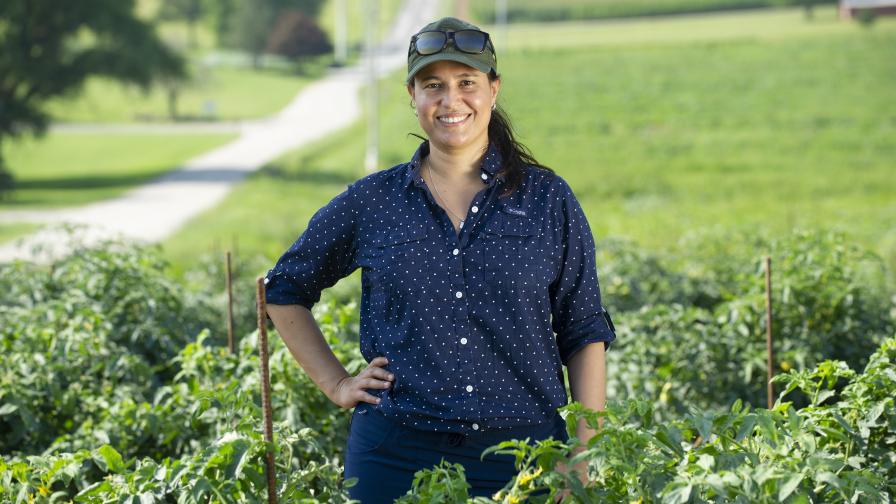3 New Peaches Growers Should Know About
USDA researchers have some news that’s just peachy – literally. The agency’s Agricultural Research Service (ARS) arm has released a trio of ‘Joy’ peaches—‘Rich Joy’, ‘Liberty Joy’, and ‘Crimson Joy’ —to help enhance the southeastern U.S. fresh peach market.
Here are some specs on the new varieties:
- ‘Rich Joy’ is named for its fruit’s rich flavor and as a way to honor ARS peach breeder William Richardson Okie, who retired in 2014. Okie is known for having developed the series of ‘Prince’ peach varieties, which are still in commercial use. It requires about 850 chill hours and ripens between ‘Julyprince’ and ‘Flameprince’ in mid-August. At maturity, about 90% of the fruit is bright red with an attractive yellow ground color on the fruit. This makes it preferable to older, less-blushed ‘Cresthaven’ and ‘Early Augustprince’ for the similar harvest window. As a late-season variety, ‘Rich Joy’ fruits reliably with attractive, large, firm, premium fruit that appear to soften slowly on the tree, allowing it to be picked over a relatively longer period compared to other varieties.
- ‘Crimson Joy’ is named for its almost fully red-blushed skin. It requires about 700 chill hours, has redder skin color, firmer fruit, and improved fruiting reliability, compared to ‘Harvester’ and ‘Redhaven’, which ripen at about the same time. In addition, ‘Crimson Joy’ appears less vulnerable to some chill inadequacy and spring freeze.
- ‘Liberty Joy’ is so called because it ripens near the Fourth of July. It has the shortest chilling requirement of the three new varieties, about 650 chill hours. It ripens in late June to early July. It will be a good alternative to current commercial varieties in this harvest window such as ‘Fireprince’, ‘Blazeprince’, ‘Scarletprince’, and ‘Redglobe’, all of which require about 850 chill hours and do not produce well when winter chill has been insufficient for flower bud maturation. ‘Liberty Joy’ also appears to be less vulnerable to spring freezes, compared to other varieties with the same short chill requirement.
According to USDA, the three ‘Joy’ peaches are not genetically related. They are all yellow-fleshed, soften slowly to a smooth buttery texture, with balanced sugar/acid ratios and pleasant eating quality. But they differ in pedigree parentage, ripening time and chilling requirement (the minimum time a fruit-bearing tree must be exposed to temperatures below 45°F before it will blossom).
Chunxian Chen, with the USDA-ARS Fruit and Tree Nut Research Unit in Byron, GA, developed the ‘Joy’ trio of peaches. He explains that new varieties continue to be needed because the southeastern U.S. peach industry is facing multiple challenges, including more incidences of warm winters and spring freezes, improved fruit quality, competition from other fruits and imports, and demand for varieties with improved resistance to pests/diseases and reduced need for pesticides. There also is a need for varieties to fill certain harvest windows, he adds.
“We must continue to breed new peach varieties to meet growers’ needs, elevate overall production efficiency and market share and keep the industry sustainable and profitable.”











